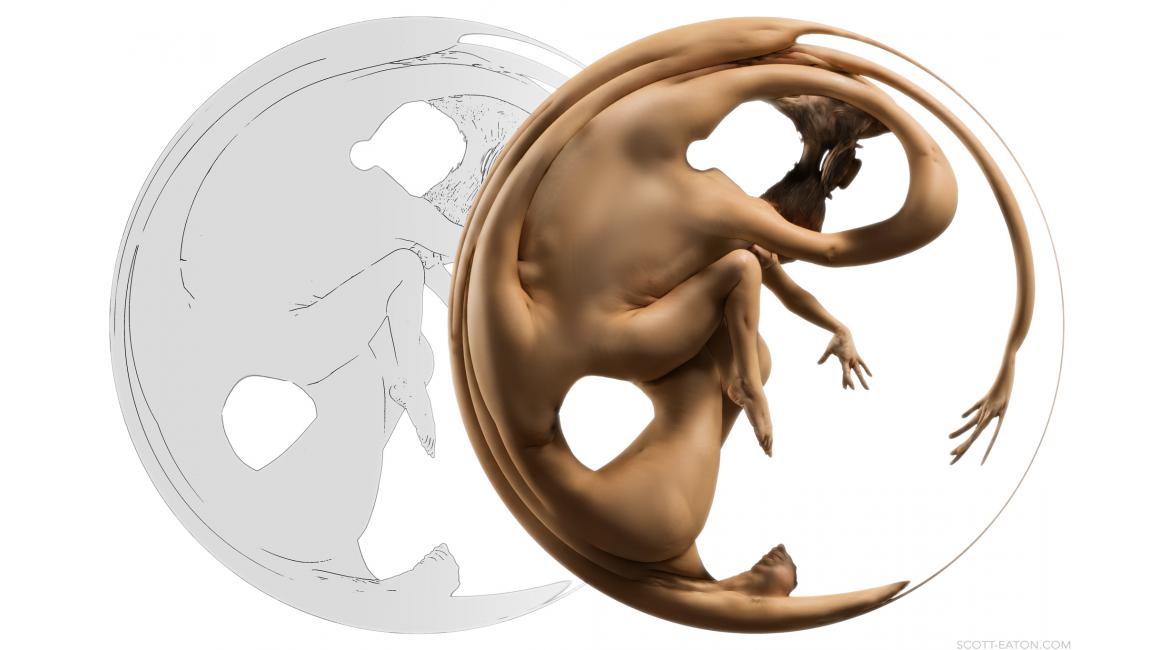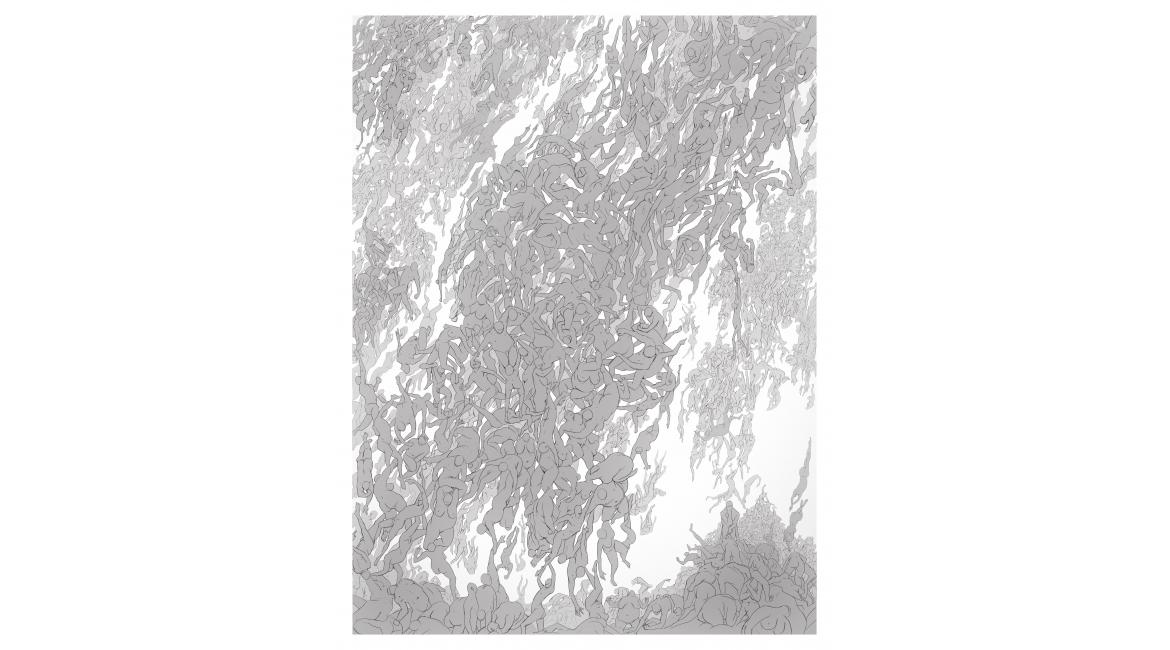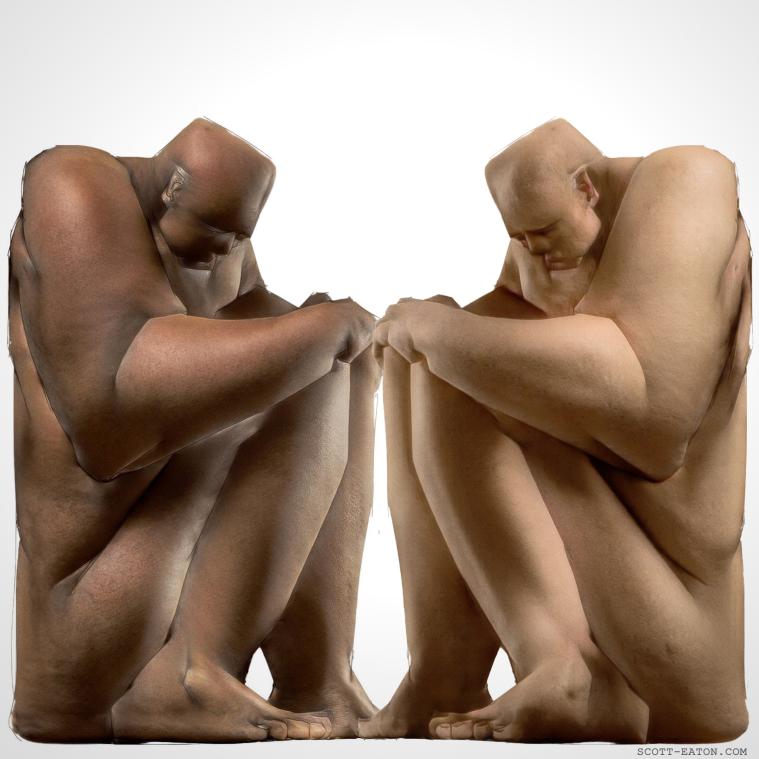Scott Eaton is an artist and photographer who simultaneously elevates and grounds his art with science. Having achieved his master’s degree from the MIT Media Lab, Scott supplemented this by studying academic drawing and sculpture in Florence, Italy. His most recent project - Artist+AI: Figures & Form - which Direct Digital helped him with, is an innovative blend of his interests in art, photography, science and AI. Scott took some time out of his schedule to discuss this project, which exhibited at Somerset House, and what inspires his work with AI.
Can you describe the project Figures and Forms?
Figures & Form is an artistic collaboration between me, as an artist, and AI that I have trained as my ‘assistants.’ It is the culmination of three years of experimentation at the intersection of the latest in AI and my work in drawing, photography, and sculpture. The ‘Figures’ in the project title refers to works created by training AI on my figurative photography and then using it as a tool to photographically render my drawings. ‘Form’ refers to experiments with similar AI technology but this time employing it to creating simplified, abstracted sculptural representations of my drawings – effectively converting my drawings (or animated input) into 3d.
How did you come up with this idea?
The journey began with a small demo that circulated around the internet called “Edges2Cats” which used AI (more specifically, as subset called ‘machine learning’ or ML) to transform simple drawings/outlines into furry, photographic representations. There was something mysterious and magical in that small demo which got me hooked on the possibility of using AI as a collaborator in the artistic process. That was the start of a long journey exploring the potential of this new medium.
What is your relationship with AI and thoughts on AI creating art?
I have a “working” relationship with AI and use it as a tool, albeit a sophisticated, technically complex tooI. I consider myself an ‘AI practitioner,’ comfortable and conversant in the tools and techniques, but not a researcher or academic. As an artist, I appropriate the tools and algorithms and modifying them as necessary to achieve an artistic vision.
Regarding AI creating art itself, I think we are a long way off. In the near-term, AI will give artists amazing new creative capabilities. In the long term, questions of human vs computer creativity will become the big issue. Can machines be truly creative, or will their creativity be only a facsimile of human art they have ‘studied’? Will work that computers create autonomously resonate with humans, or will it be empty because it lacks authentic human experience? These are only a couple of the questions that we will face in art, and society at large, regarding AI in the coming years.
This isn’t a typical photographic or moving image project, but how has your general photographic style informed this work?
My photography forms the foundation of the datasets I am training the AI tools on. Essentially, I train the AI to learn a sophisticated connection between my drawing style and my photography. All the details of the photoshoots – the lighting, backgrounds, hair, wardrobe, focal length, etc – have to be controlled because they will be learned by the AI. Knowing this, the shoots are meticulously planned in order to account for all the details the AI will glean from the imagery.
How would you describe your style?
Figurative, slightly surrealistic, occasionally whimsical, but always well crafted. If there was an artistic stew made by mixing Francis Bacon, Rodin, and Egon Schiele, with a pinch of Botero and Jenny Saville for roundness, that might be my recipe.
What kind of themes are you drawn to exploring?
The spectrum of human experience is what interests me, and recently how we struggle with our human nature in the midst of a rapidly evolving technological and social landscape. Most of my work has a figurative, humanist element, as the human form is incredibly powerful at conveying emotion and intent. We’ve evolved as social creatures and respond intrinsically to representations of ourselves, so this has become an intrinsic part of my work.
Why do you choose Direct Digital?
I’ve been using Direct Digital for more than ten years, about as long as I have been photographing seriously. The team is knowledgeable, friendly, and professional. In all the years, they haven’t let me down.
How has Direct supported your projects?
I’ve shot tens of thousands of photographs in the Direct Studio to support the work shown here. Also, for one of the key pieces, Entangled II, in the show, we shot high-speed fluids with a Phantom Flex 4k, generously provided by Direct and Panavision, along with the wacky, exotic Laowa 24mm f/14 macro probe lens and a handful of HMIs. It was a fun day of shooting.
What’s next?
Brainstorming and playing around right now. Lots to explore but there is portrait series waiting in the wings.
You can see a virtual tour of his Figures & Form exhibition and make sure you check out Scott’s website and for the latest on his state-of-the-art, boundary-erasing work and courses as well as his social media: on Twitter, Instagram and Facebook.




